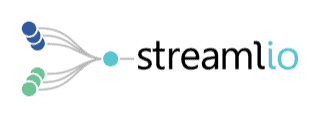First Look: Streamlio’s Intelligent Platform for Fast Data
In this video, Karthik Ramasamy, co-founder of Streamlio, tells us about the market trends behind the creation of Streamlio, as well as the value and key differentiators of the Streamlio intelligent platform for fast data.
Transcript
KR: These major three trends are the reason why started this startup. The existing technologies today do not seem to address these needs very well. We realized that starting a company to address these market needs will be a wonderful idea.
AB: Terrific. Tell me about the product. What are you doing with Streamlio?
KR: Streamlio is actually building a platform. That platform uses the best-of-breed proven technologies at Yahoo! and Twitter, where we worked and open-sourced it. That platform consists of three aspects. One is for data collection and addition. The second aspect is to process the data. The third aspect is to store the data in the form of results, or the raw data, which could be accessed later.
Essentially, the Streamlio platform, combines all the aspects into one single platform.
These three open codes are assembled into the platform. On top of that, Streamlio adds a lot of value-added features, so that the enterprise can consume that software.
Some of these features include security, data production, resiliency, and tooling around the code so that it makes easy to use at the enterprises.
AB: When you’re talking to a business executive, rather than a technical buyer, how do you describe the value that they get from the Streamlio platform?
KR: The Streamlio platform enables businesses to process fast-moving data, either in real time or near-real time, or just in time. We at Streamlio prepackaged the solution and allow you to drive these benefits for real-time data processing so that you can deliver value to your customers.
You feel to build this on your own, it requires expertise across different segments of the software, and also involves a lot of complexity in terms of integrating them to making it to work seamlessly end to end, which the Streamlio platform already provides.
AB: What do you see as the key differentiators that people should understand about your product?
KR: There are four key differentiators for the Streamlio platform compared to its competitors. First is performance. Second one is open-source and best-of-breed technologies. Third one is proven at scale, and the final one is resiliency.
From a performance prospective, the Streamlio platform has low latency, high throughput, independent of scale. By integrating three best-of-breed open-source projects, we leverage the continual innovation that happens in open-source, in the unified Streamlio platform. These technologies have been proven in production at scale at Twitter and Yahoo! for several years, before we decided to use it in Streamlio.
Finally, we’ll bring it all together for the enterprise using self-healing capabilities that provides automatic failure recovery and guaranteed data protection.
AB: Your value add is you’ve taken open-source projects, integrated them, added enterprise features. You provided that, making it easier, faster, less expensive for your customers to provide the value for theirs.
KR: Yes.
AB: Great. How do people get more information? How do they get started?
KR: You can visit the Streamlio website, and then download the sandbox environment for easy local experimentation. The Streamlio website also has additional resources, in terms of logs and videos, that you can educate yourself about the Streamlio platform. There are rapid deployment tools available for frameworks like Kubernetes in the cloud, as well as for local. Finally, you can visit the project GitHub webpages to look at the source code.
AB: Excellent. Well, thank you, and good luck.
KR: Thank you.
Featured Resources
-
Streaming data has exploded, along with needs to process that data in real-time. Analyst firm Gigaom and Streamlio look at the technology landscape for streaming technology and compare leading solutions.
-
Data, both streaming and batch, is the glue needed to connect microservices. Hear about technology requirements and best practices needed to build data-driven microservices applications.
Connect with Streamlio
About Streamlio
Streamlio delivers the first intelligent platform for fast data. Streamlio’s solution is built on leading open source technologies for messaging, processing, and storage of streaming data that have been proven at scale in companies including Twitter and Yahoo. Founded by industry veterans, Streamlio helps organizations build the data-driven applications they need to react to data in real-time. Learn more online at streaml.io.






